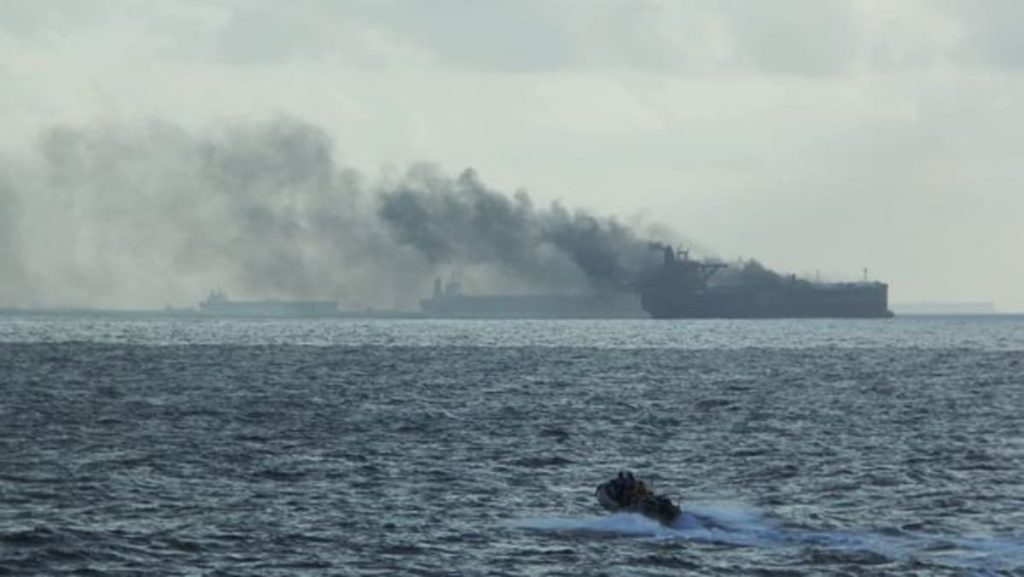A large oil tanker, the Ceres I, collided with another vessel, the Hafnia Nile, off the coast of Malaysia, causing both ships to catch fire. The Ceres I then fled the scene and turned off its tracking system. Malaysian authorities launched a search and rescue operation and successfully located and detained the Ceres I along with two tugboats that were towing it. Further investigations will be carried out to determine why the Ceres I fled the scene. 36 crew members were rescued, but 26 remained on the Ceres I to fight the fire. An oil spill covering five square nautical miles was found at the scene of the collision.
The collision between the two tankers occurred within Singapore’s maritime search and rescue region, approximately 55km northeast of Pedra Branca. Singapore authorities were involved in the rescue operations, deploying a navy vessel and a helicopter to assist with evacuation efforts. Pedra Branca is located near the eastern entrance of the Singapore Strait, about 44km east of mainland Singapore. The Singapore Maritime and Port Authority provided information about the incident, indicating the location of the collision and the involvement of Singaporean assets in the rescue efforts.
The Malaysian coast guard conducted aerial surveys of the area following the collision, observing the extent of the oil spill caused by the incident. The spill covered a significant area of five square nautical miles, posing an environmental hazard in the region. The impact of the collision and resulting oil spill on marine life and ecosystems in the area is a concern for authorities. Efforts will be made to contain and clean up the spill, as well as assess any damage caused by the incident.
The detention of the Ceres I by Malaysian authorities marks a significant development in the aftermath of the collision. The tanker’s illegal departure from the scene and disabling of its tracking system raised questions about the reasons for its actions. As investigations proceed, authorities will seek to determine the circumstances of the collision and hold those responsible for any violations or negligence. The safety and security of maritime navigation in the region will be a priority for both Malaysia and Singapore, as they work together to address the aftermath of the incident.
The cooperation between Malaysia and Singapore in responding to the collision demonstrates the importance of maritime partnerships in ensuring the safety of vessels and crews in the region. The coordinated efforts of both countries’ coast guard and maritime authorities have been essential in locating the Ceres I and managing the consequences of the collision. The incident serves as a reminder of the risks involved in maritime activities and the need for stringent safety measures and protocols to prevent accidents and environmental damage. Lessons learned from this incident will inform future strategies for enhancing maritime safety and security in the region.
Moving forward, authorities will continue to investigate the circumstances surrounding the collision and work towards mitigating the environmental impact of the oil spill. Efforts to prevent similar incidents in the future will be a focus for both Malaysia and Singapore, as they seek to enhance maritime safety standards and cooperation in the region. The detention of the Ceres I and the ongoing response efforts reflect a commitment to upholding maritime regulations and safeguarding the maritime environment. By addressing the aftermath of the collision through cooperation and decisive action, Malaysia and Singapore are working to ensure the safety and sustainability of maritime activities in their waters.


